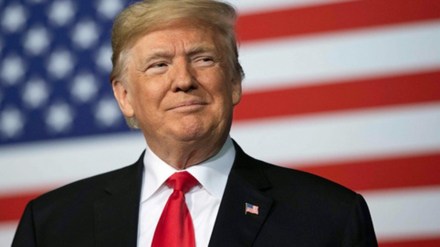– By Chinmay Joshi
At the outset of 2025, Mr. Donald Trump will be sworn in as the 47th President of the United States of America (USA). Mr. Trump, during his presidential election campaign, was vocal about initiating various policy measures in order to support his ‘America First’ policy objectives upon assuming the office. Recently, he has announced that 100% tariffs will be imposed on BRICS (Brazil, Russia, India, China, South Africa) nations if they attempt to create their own currency to replace the US dollar as a vehicle or reserve currency and thereby move towards the de-dollarisation of world trade. Besides, it has been estimated that the tariffs will be levied to the tune of 25% on all goods from Canada and Mexico while additional tariffs of 10% will be imposed on Chinese goods. Even though India has been spared from the initial round of tariffs, the threat of tariffs still looms large on Indian goods in the upcoming period.
The adoption of restrictive trade strategies by the USA amidst uncertain and volatile global economic conditions coupled with prolonging and widening military conflicts, will invariably impact global trade negatively. The adverse effects will also be experienced by the emerging markets and developing economies (EMDEs), such as China, Brazil, India, etc. in terms of decreasing exports of goods and services. The recently released trade data for India by the Department of Commerce, Ministry of Commerce and Industry, exhibited that India recorded an overall trade deficit of 63.24 US$ billion during the period April-October 2024 which is an increase of 3.22 US$ billion as compared to the previous year. The merchandise exports grew by 3.17% as compared to 5.77% growth in merchandise imports, while services exports grew by 12.50% vis-à-vis 11.97% services imports in the same period. This implies that the trade deficit incurred during this period was significantly driven by the higher level of merchandise imports predominantly due to the rising international commodity prices as a result of geopolitical tensions and geo-economic fragmentations. The declining trend in the growth rate of Indian exports to 2.8 % in Q2 of 2024-25 from 5.0% in Q2 of 2023-24 and 8.7% in Q1 of 2024-25, as per the latest official national income estimates of GoI, is certainly a cause of worry amid the potential hazards, as this sector has huge employment generation capacity.
Additionally, the threat of impending tariffs from the USA will have detrimental consequences on the trade opportunities for India with the USA in the future, as the USA is the largest export destination for India in value terms as per the official trade data of the GoI. The total exports to the USA rose by 6.31% in April-October 2024 on a Y-o-Y basis and recorded to the tune of 47.239 US$ billion whereas total imports from the USA rose by 2.46% and recorded at 26.041 US$ billion during the same period. Another cause of concern emerges from the possibility of imposition of higher tariffs by the USA on Indian exports due to the existence of components of Chinese materials in Indian finished products. The imposition of tariffs on Indian products such as pharmaceuticals, smartphones, automobiles, engineering goods, textiles will result in lessening the competitive advantage for India. Similar counter-retaliatory measures from India will not bode well for the country, as India is dependent on the USA for its growing demand for advanced and sophisticated technology, energy equipment and machinery, military equipment and weaponry and capital goods among other things.
In this regard, India should pay adequate attention to accelerating domestic consumption so that reliance on the export market will be reduced. This will further help in strengthening local industries and reducing other vulnerabilities arising out of restrictive trade practices. The recent continuous fall in the Indian currency could also prove to be a ‘blessing in disguise’ if India can reap the maximum benefits from its depreciation, as a weaker domestic currency increases the export competitiveness of the country. A higher level of tariffs on Chinese commodities entering the USA will also be helpful to the Indian exporters to grab the opportunity created by the declining Chinese exports. Besides, India should aim to take maximum advantage from the China+1 strategy, which would provide ample opportunities to India to strengthen its position in industries and sectors such as the global supply chain, manufacturing, AI and semiconductors, pharmaceuticals, defence production and technology, among others. Export diversification, through the expansion of the export of commodities to traditional trading partners along with channeling and exploring new export destinations, will certainly help alleviate the pain arising from abrupt and disruptive policy measures in the external sector.
Amidst the emergence of a new era of deglobalization of the world, the weaponization of restrictive trade practices will pose greater challenges, particularly to the EMDEs. In this milieu, it is important that India find and adopt new, innovative and non-disruptive ways to circumvent and mitigate the negative repercussions arising from such trade conflicts.
(Chinmay Joshi is a Research Associate, Finance and Economics, Bhavan’s SPJIMR, Mumbai.)
(Disclaimer: Views expressed are personal and do not reflect the official position or policy of Financial Express Online. Reproducing this content without permission is prohibited.)
